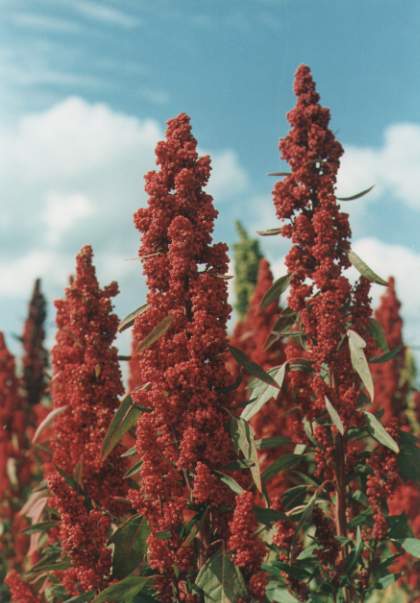Share This
March is all about an ancient grain that’s become a regular household name. Quinoa (KEEN-wah) is a unique product that boasts some serious diet benefits. Though, by definition, quinoa is not technically a cereal grain, but a “pseudo-cereal”, we include it in our grain collection because it is cooked and eaten like other grains and a has a similar nutrient profile.
While a relatively new product on our dinner tables, quinoa has been a staple of communities high in the Andes for thousands of years, and for good reason. One cup of quinoa contains 8g of protein and 5g of fiber, and is also one of the only plant foods that provides all nine essential amino acids, making it a complete protein. Gluten-free and easy to prepare, it’s skyrocketed in popularity in recent years. In fact, the Food and Agriculture Organization of the United Nations (FAO) even declared 2013 the International Year of Quinoa. Quinoa is such a superstar, it’s being touted as having the potential to help in eradicating hunger, malnutrition, and poverty.
This isn’t news to Danish agronomist, Sven-Erik Jacobsen, who has been studying the plant for more than twenty years. He believes, “If you ask for one crop that can save the world and address climate change, nutrition, all these things — the answer is quinoa. There’s no doubt about it.” Because quinoa has the ability to adapt to different ecological environments and climates, is resistant to drought, poor soils and high salinity, and can be grown from sea level to an altitude of four thousand meters, withstanding temperatures between 17 and 100 degrees Fahrenheit (-8 to 38 degrees Celsius), it’s certainly not your average crop. One can see why it is perfectly poised to become our world’s saving grace.
However, though quinoa boasts all of these unique properties, it is not necessarily well suited to all agricultural landscapes. The abundant quinoa that we import from the Andes is grown in a very specific climate, at high altitudes, and isn’t necessarily well suited for other, including American, climates. Additionally, the infrastructure to grow, support and process this new crop in new areas is lacking. Still, there is progress being made outside of it’s native terrain. In August 2015, Lundberg Family Farms became the first national brand to market American-grown, organic quinoa through Whole Foods Market. With all of this in mind, farmers today are taking to the soil around the world to work to cultivate quinoa, and its production is slowly expanding to the United States, Canada, France, the United Kingdom, Sweden, Denmark, Italy, Kenya and India.
In 2013, FAO Director-General José Graziano da Silva expressed, “The International Year of Quinoa will serve not only to stimulate the development of the crop worldwide, but also as recognition that the challenges of the modern world can be confronted by calling on the accumulated knowledge of our ancestors and the small family farmers who currently are the major producers of the crop.” This belief embodies the heart and soul of what Oldways is about – inspiring good health through cultural food traditions. By embracing cultural heritage, we hope to be able to draw upon the ways in which civilizations existed for thousands of years, preserving and promoting traditional foods in ways that are good for people and good for the planet.
Now that you know the rich history and potential of this superfood, why not give it a try in your kitchen? Browse our recipe section to find a variety of quinoa dishes to choose from and let us know what you think of this tiny grain with a big impact!
(Harley)


Add a Comment